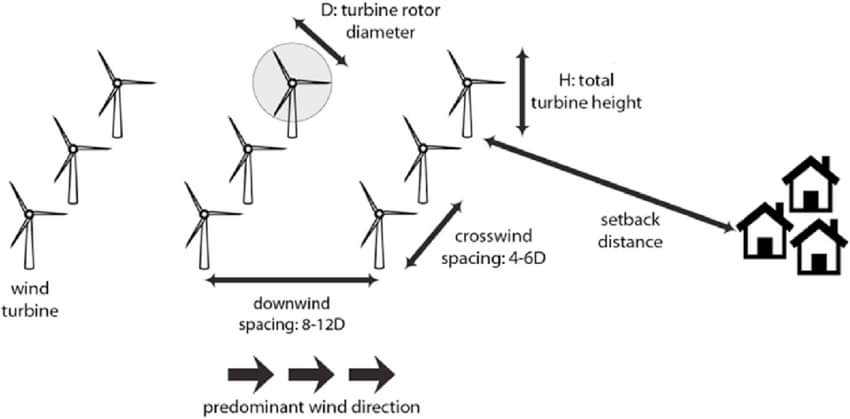The primary goal of wind turbine spacing is to maximize the power output of the wind farm while minimizing the impact of wind turbine wake effects. Wind turbine wake effects occur when the turbulence and reduced wind speed caused by one turbine impact the performance of adjacent turbines.
To minimize the impact of wind turbine wake effects, wind turbines are typically spaced at a distance of 3-5 rotor diameters apart in the direction of prevailing winds and at a distance of 1-2 rotor diameters apart in the perpendicular direction. This spacing allows for the maximum amount of wind to pass through the wind farm while minimizing the impact of turbulence and reduced wind speeds on adjacent turbines.
However, the optimal wind turbine spacing can vary depending on a variety of factors, including wind speed and direction, turbine design, and the size and layout of the wind farm. Additionally, spacing can also be impacted by environmental factors such as terrain, topography, and the presence of obstacles or other wind farms.
Overall, proper wind turbine spacing is critical to optimizing the performance and efficiency of a wind farm and requires careful consideration of a variety of factors.






No comments:
Post a Comment